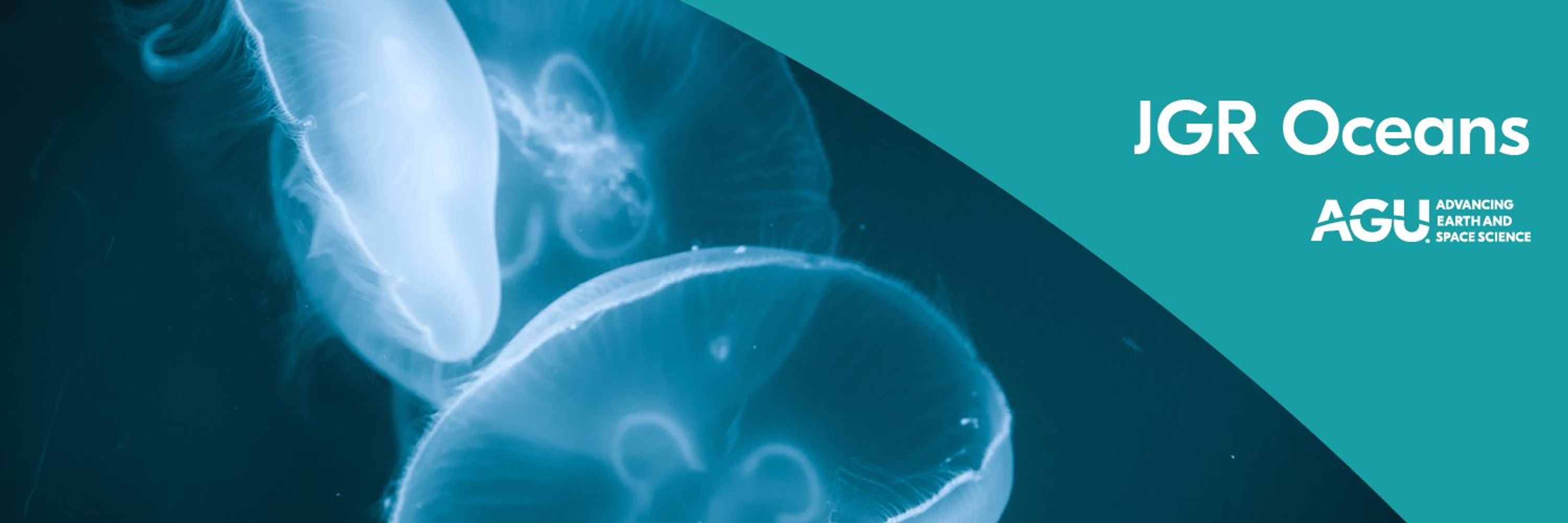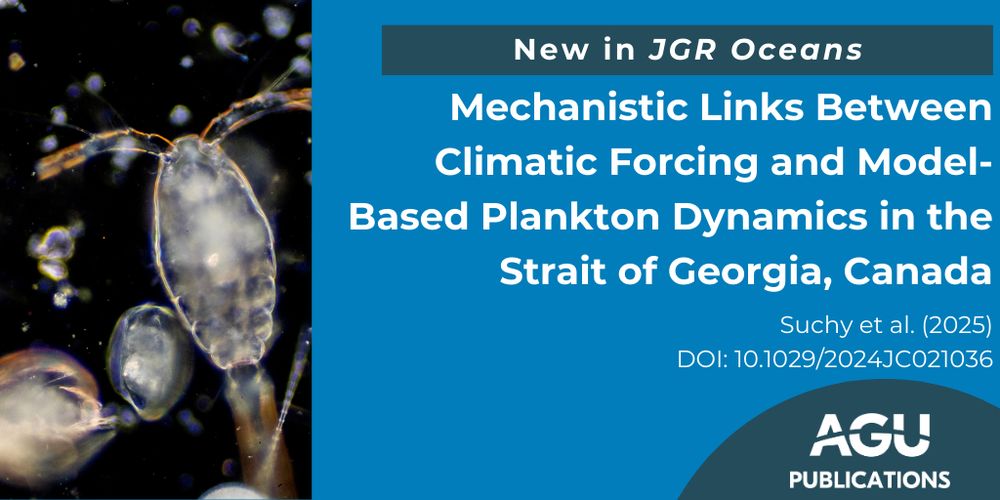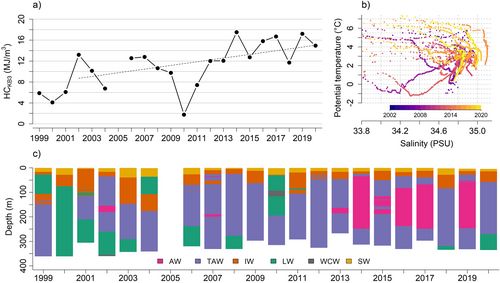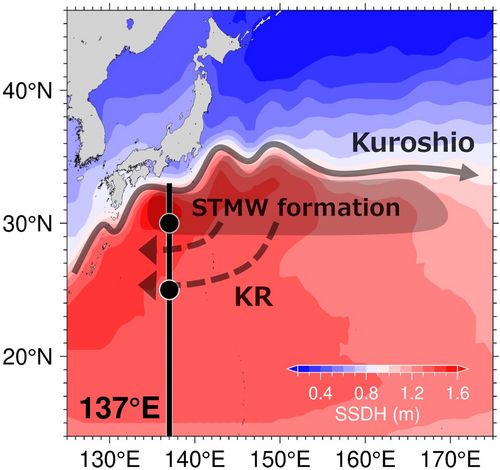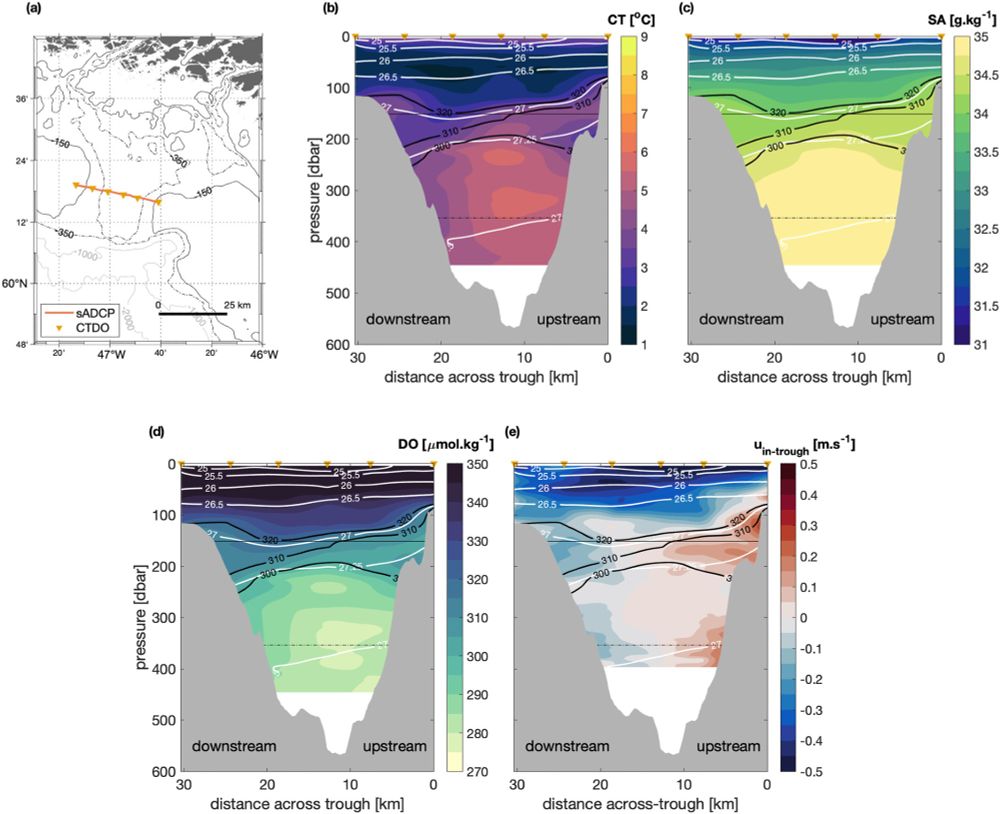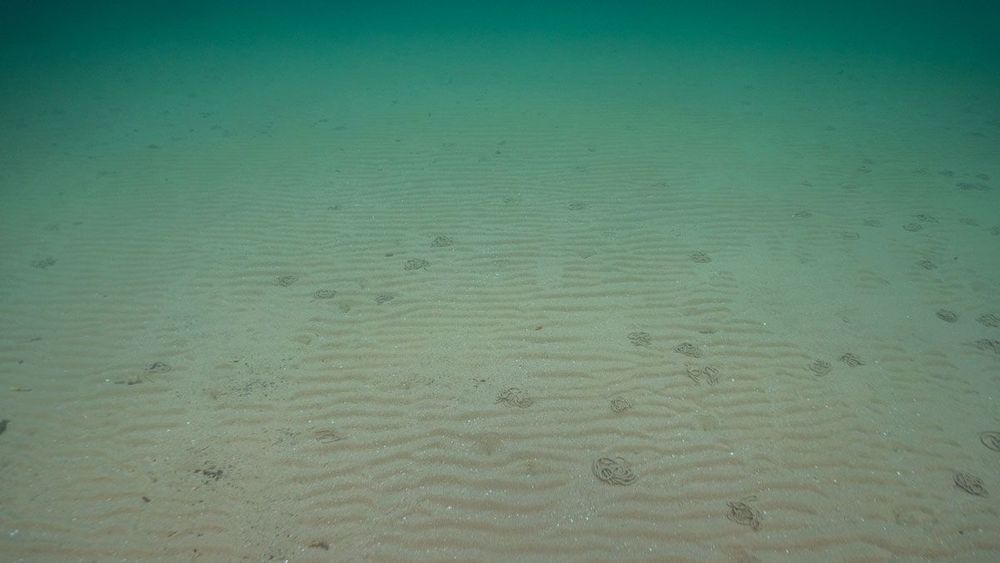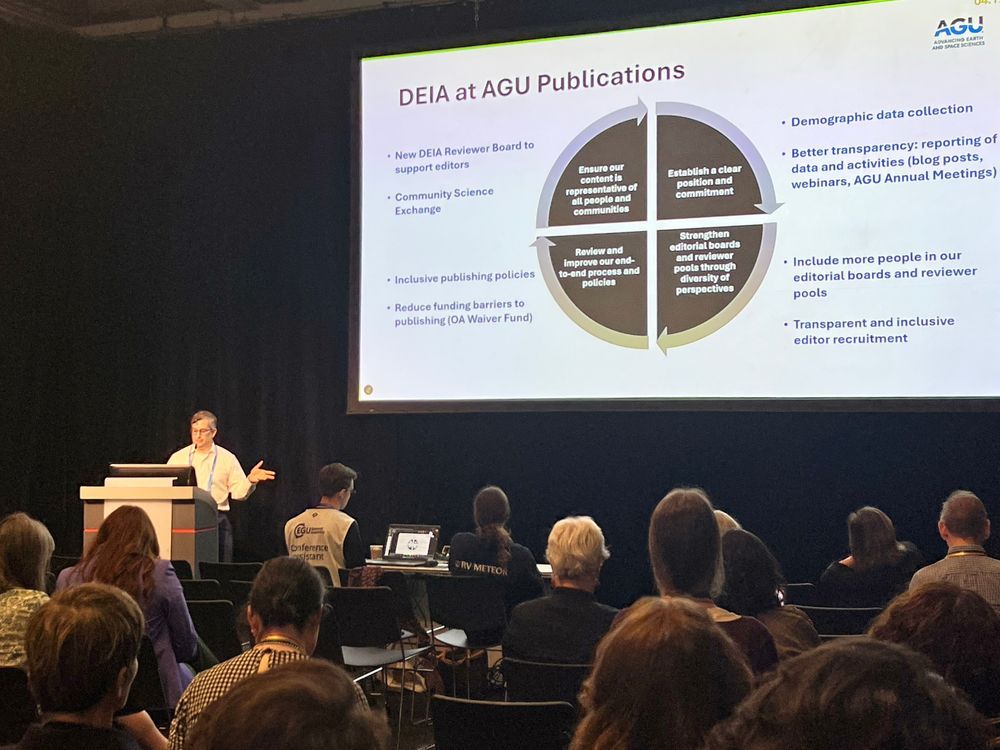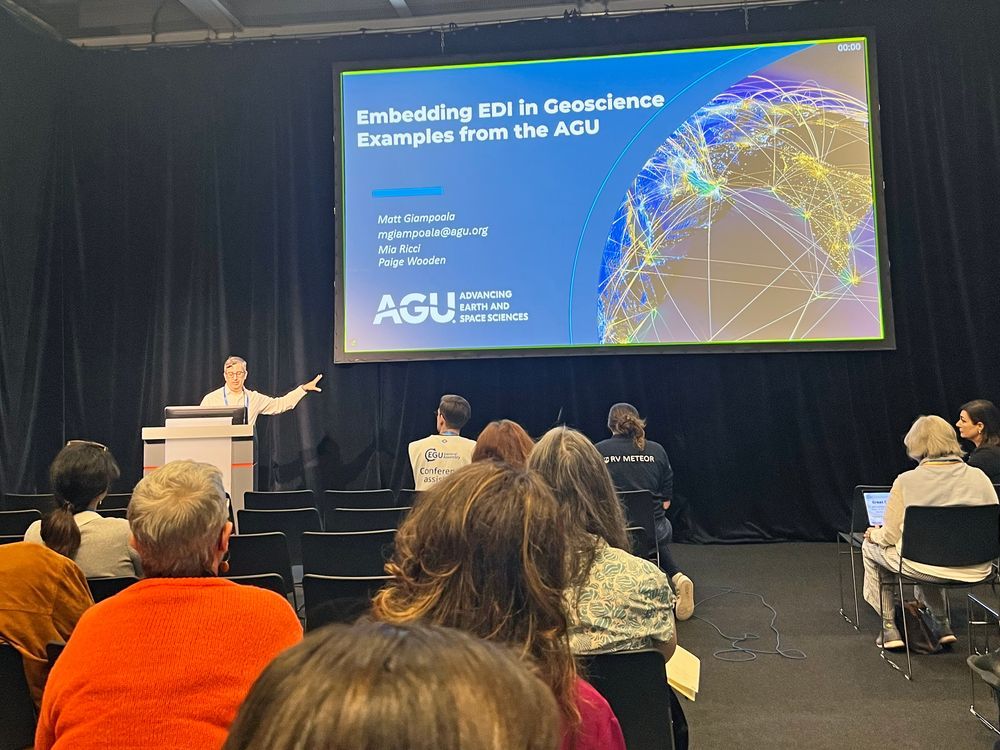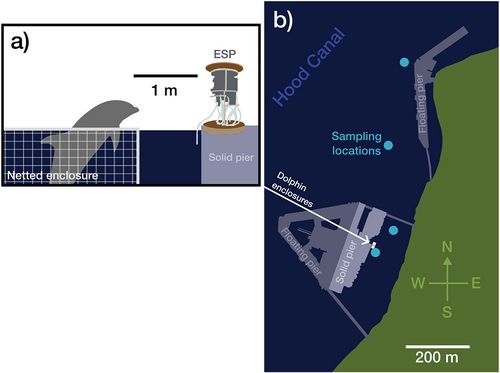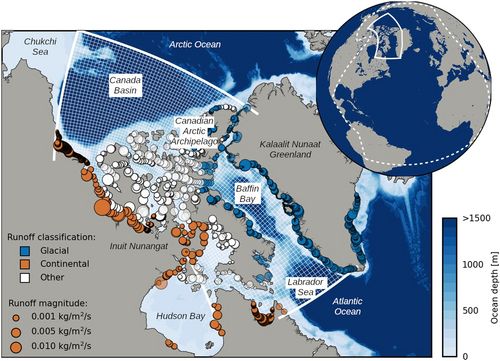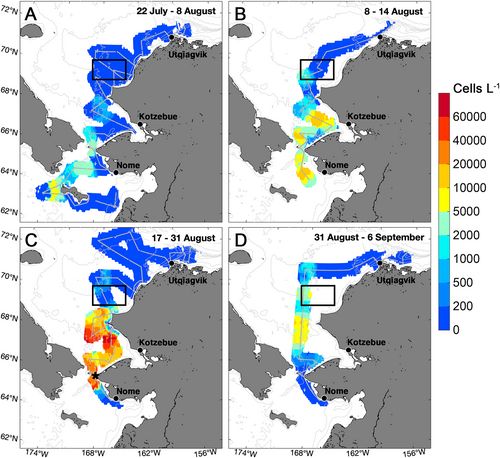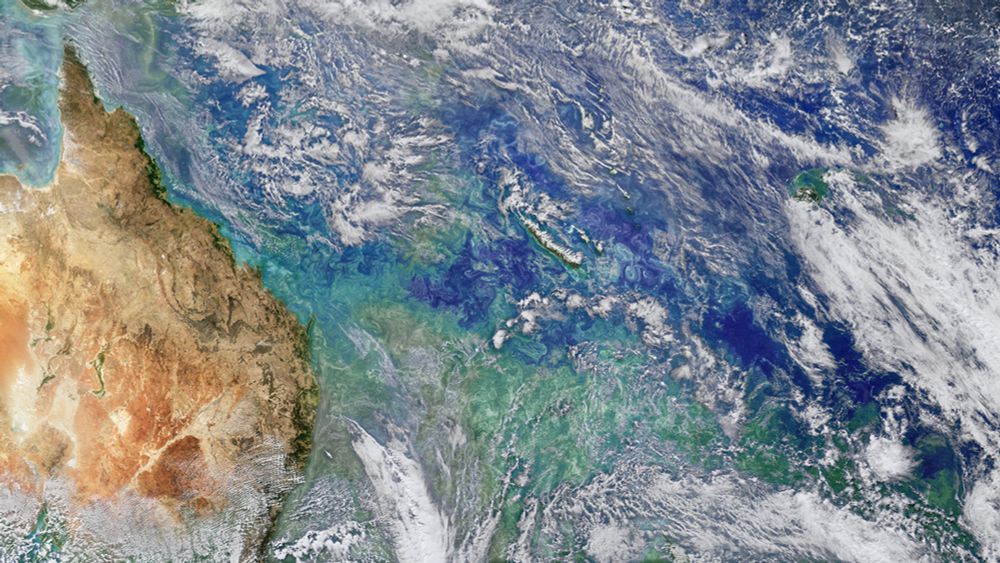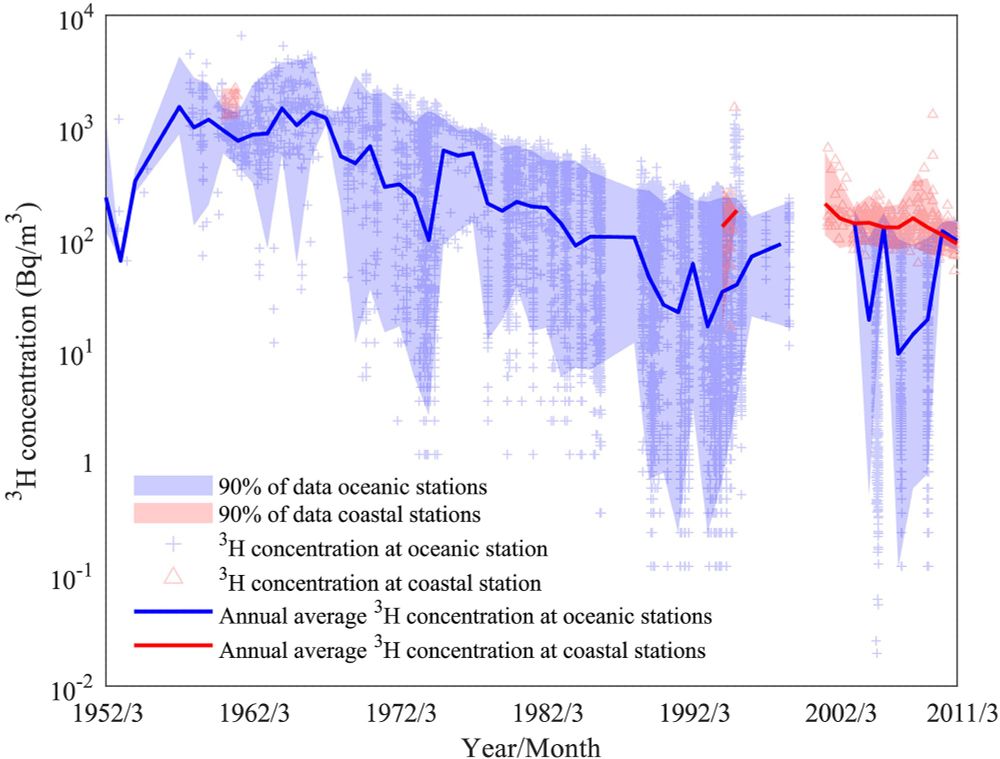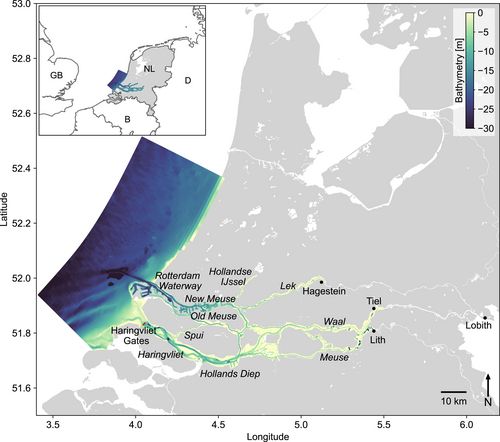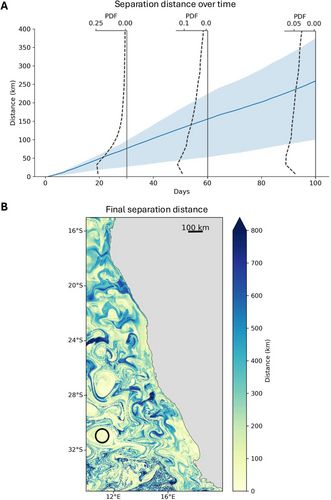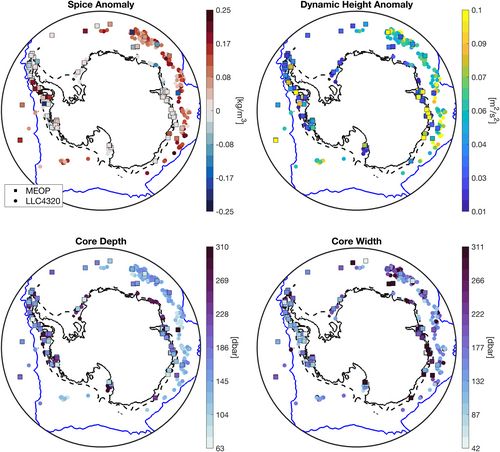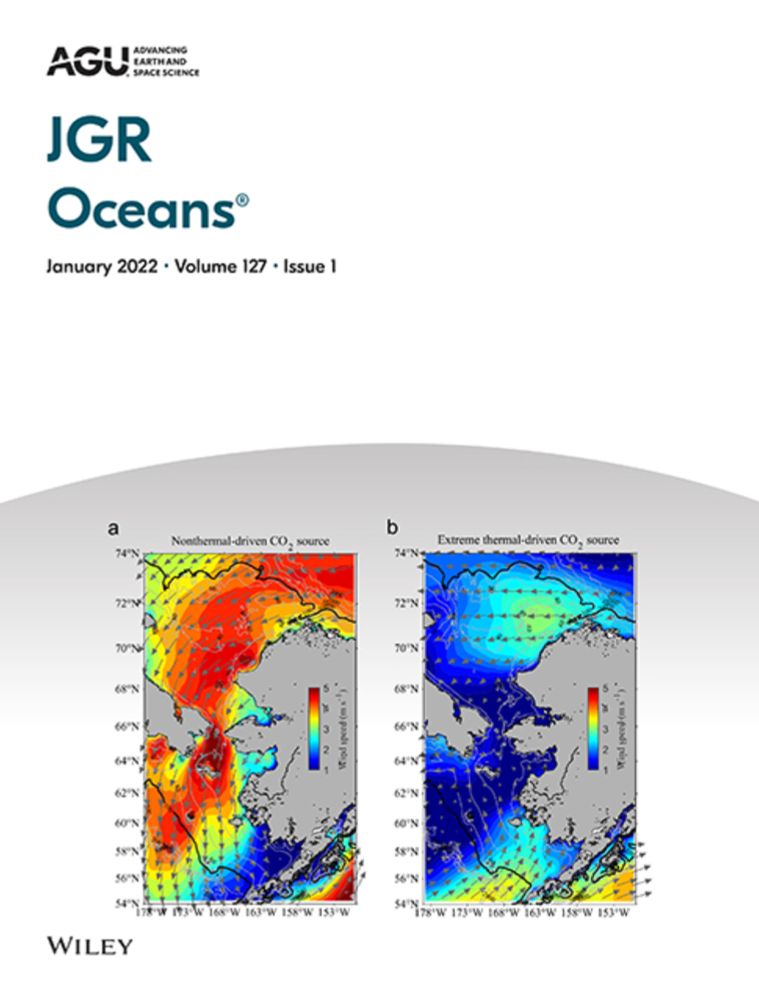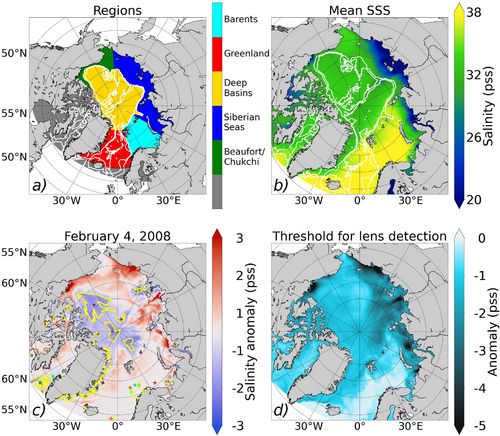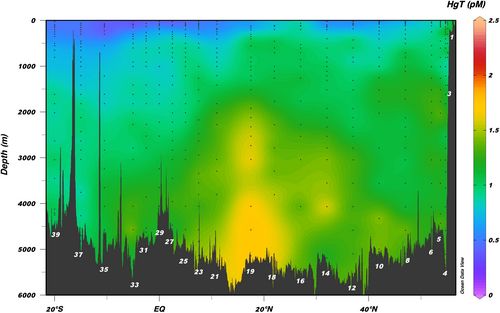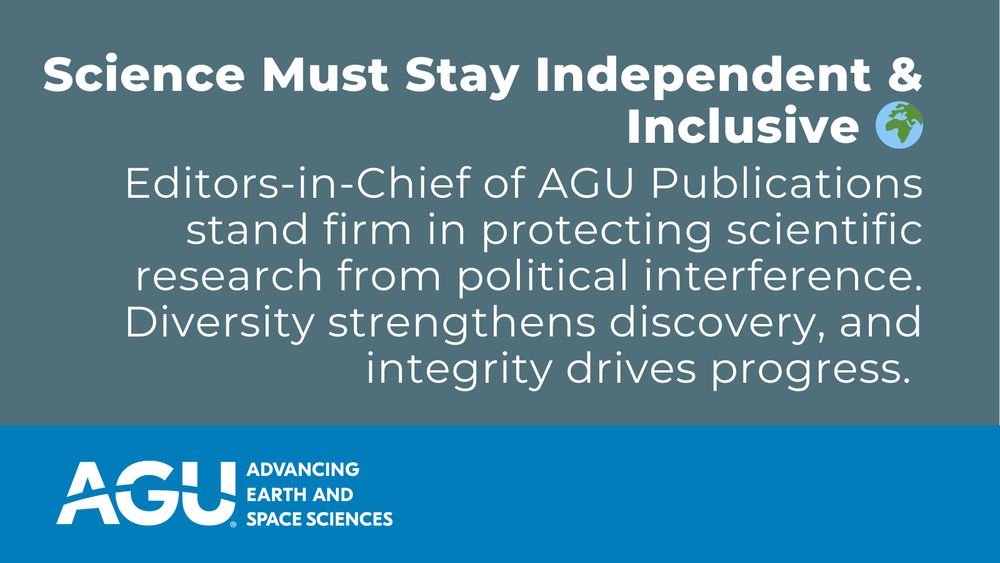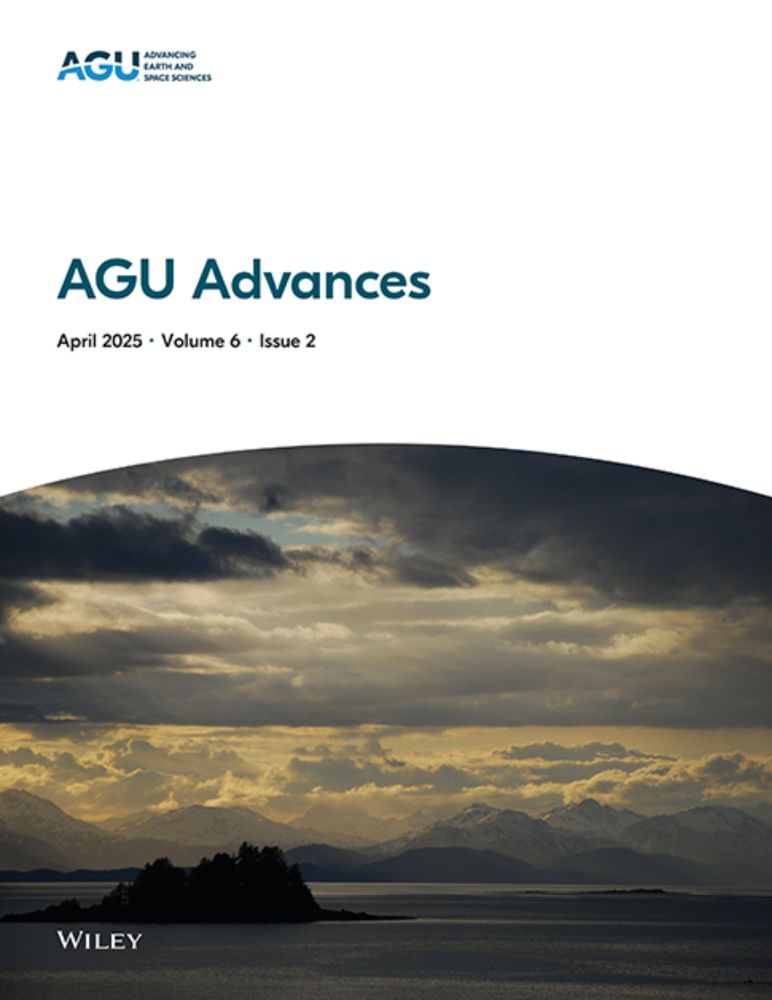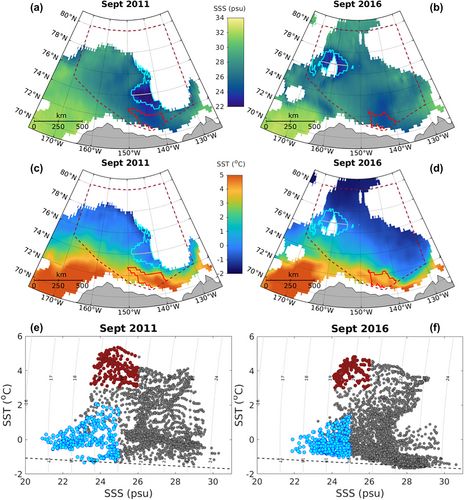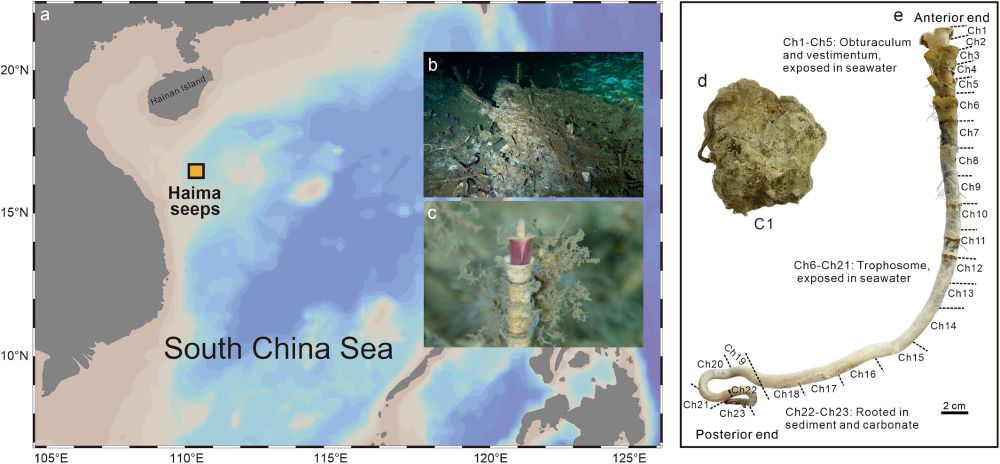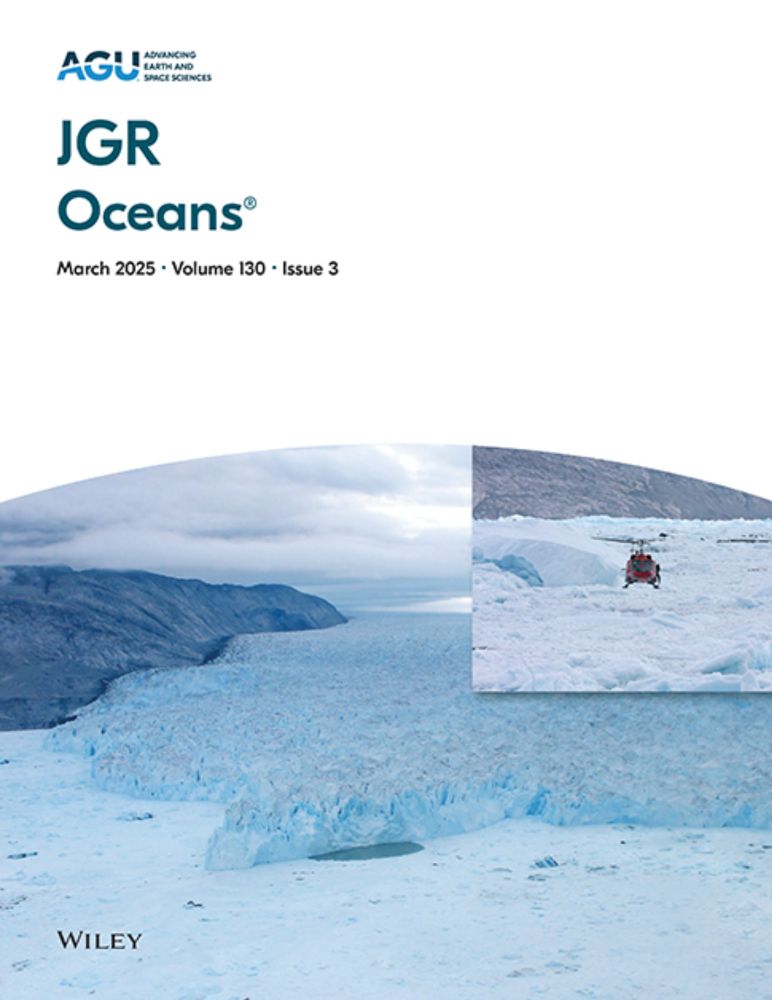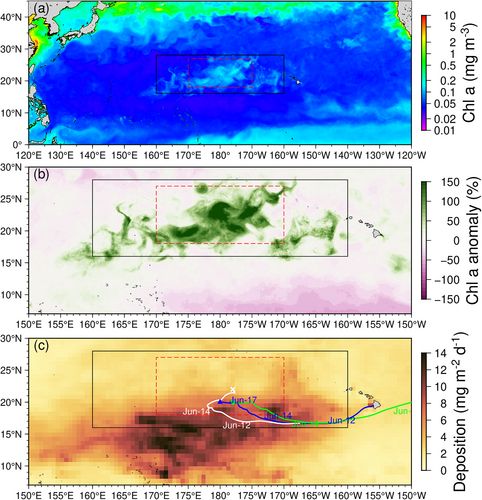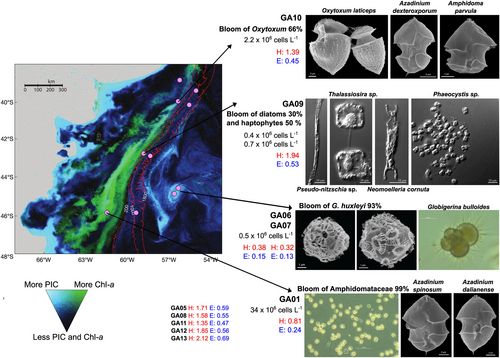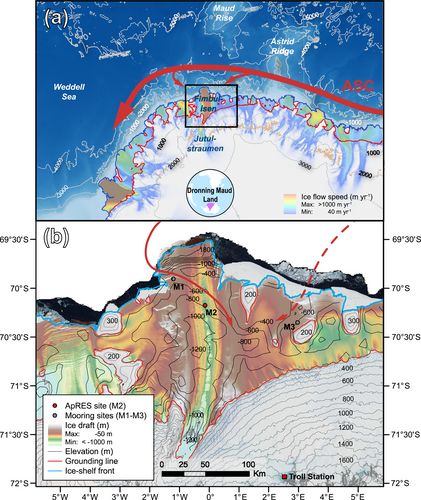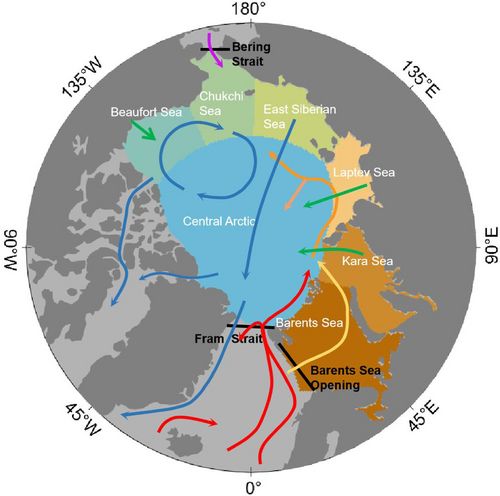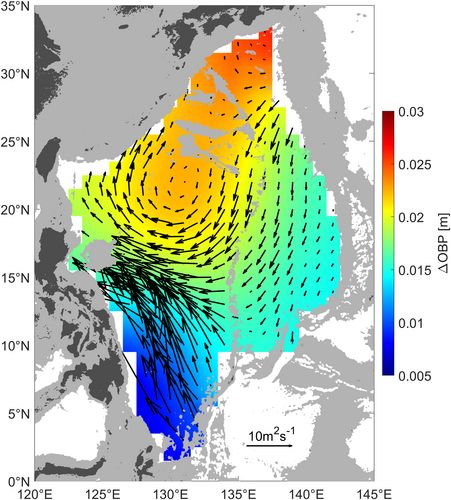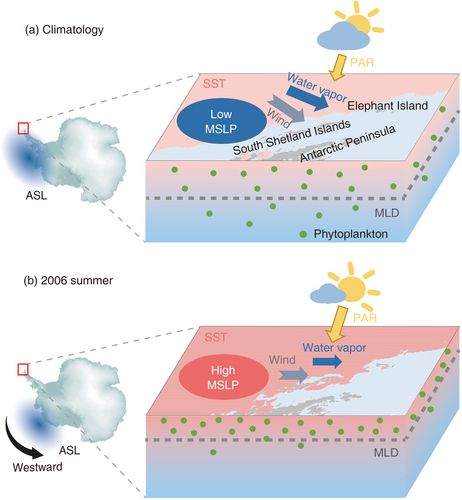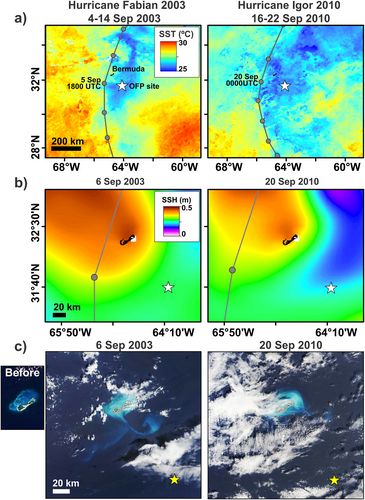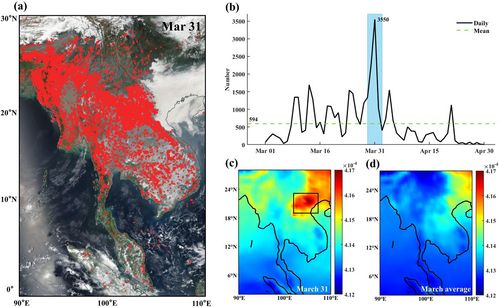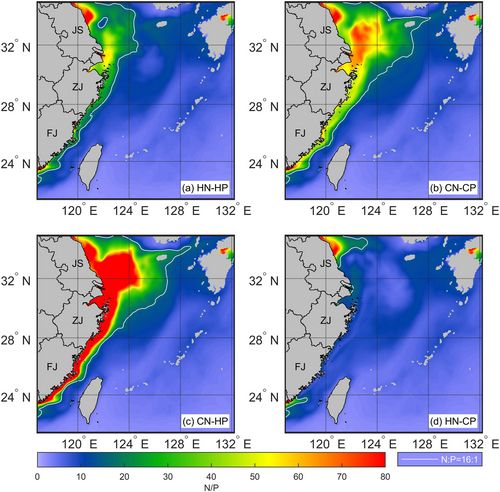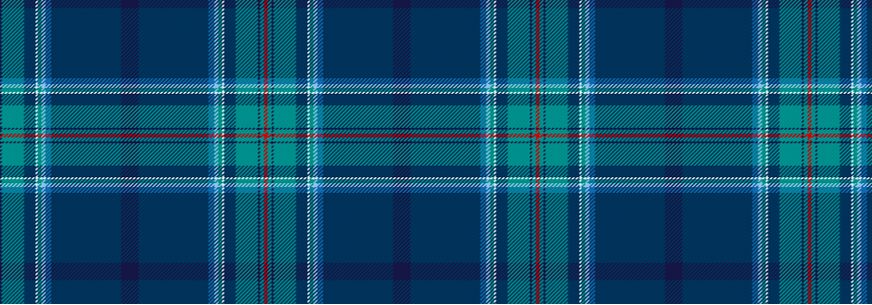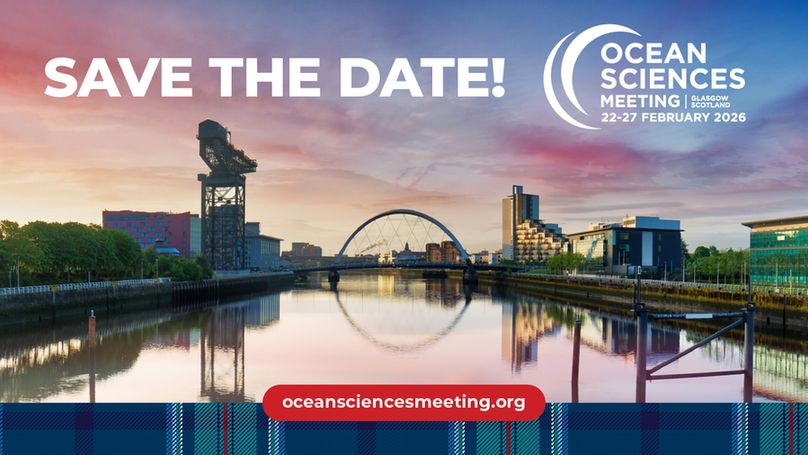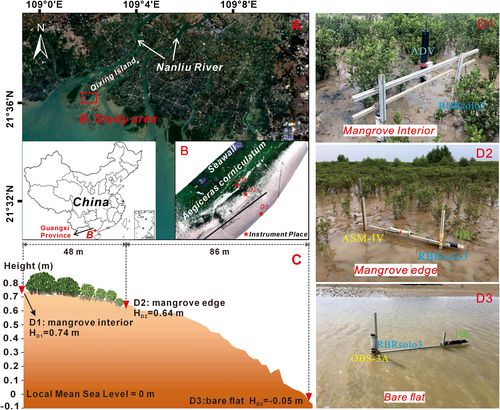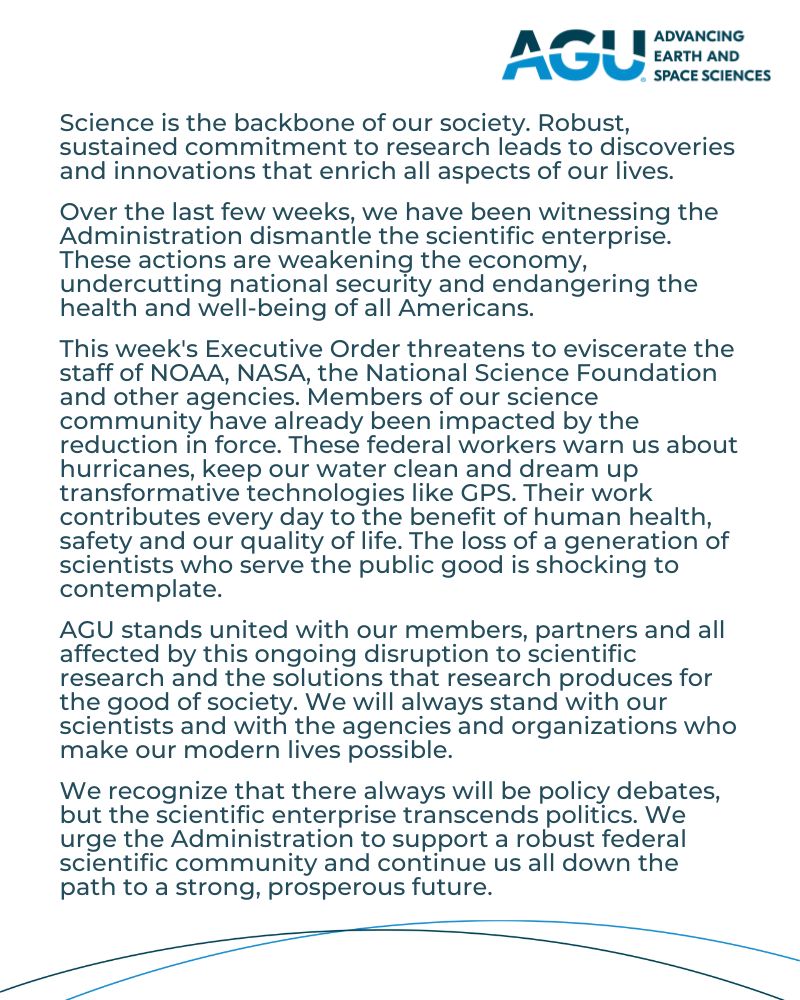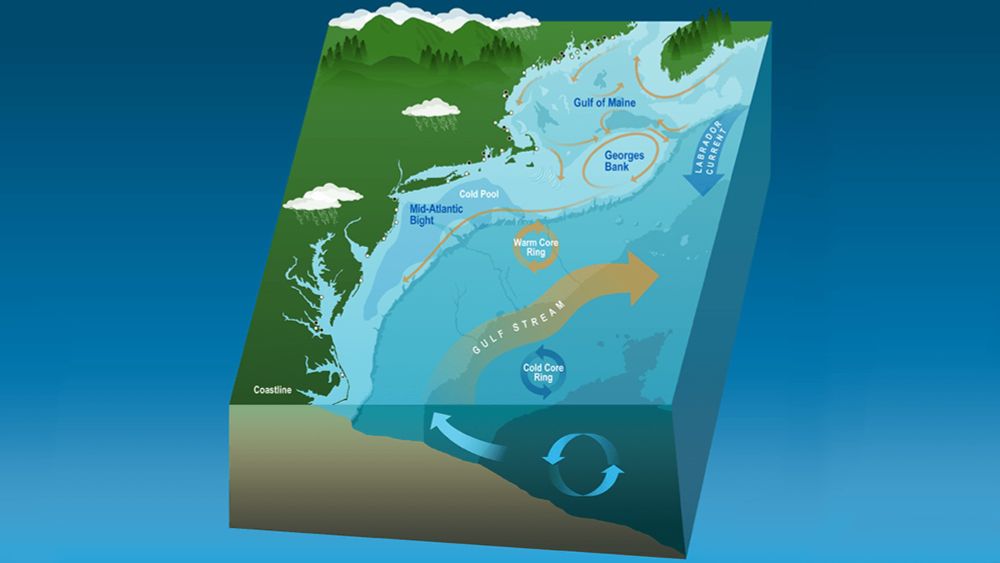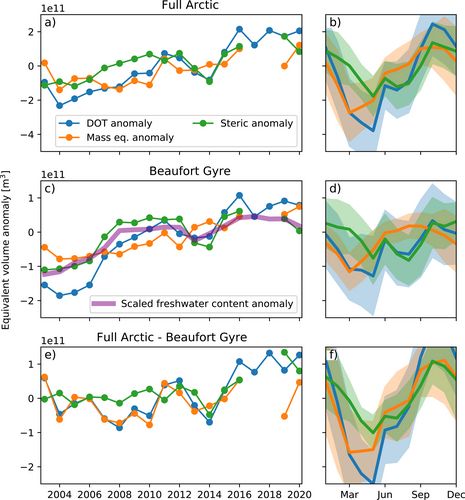JGR: Oceans
AGU Journal Official account
Advancing understanding of ocean processes.
Providing quality and integrity for authors, reviewers and readers.
Non-profit.
- Reposted by JGR: Oceans[Not loaded yet]
- Suchy et al. used a 3D physical and biological model of the #SalishSea to determine the ocean processes linking large-scale climate patterns to variations in #plankton.🌊 🔗Check out their #OpenAccess article: doi.org/10.1029/2024... #AGUPubs #Climate #Canada
- Reposted by JGR: Oceans[Not loaded yet]
- Reposted by JGR: OceansNine more datasets and products from NOAA, all related to marine and climate science, have been slated for decommissioning, including the "Billion Dollar Disaster" dataset. eos.org/research-and...
- Kongsfjorden, a key long-term Arctic observatory, transformed from 'Arctic-like' to 'Atlantic-like' conditions post-2006. De Rovere et al., investigate the causes of increasing salinity and temperature within the fjord over the past 2 decades 🌊 🐻❄️ agupubs.onlinelibrary.wiley.com/doi/full/10....
- To project future ocean acidification, it is crucial to understand natural variability in ocean CO2 content. Ono et al., study CO2 in the Kuroshio recirculation region finding variability is correlated with subtropical mode water formation 🌊 agupubs.onlinelibrary.wiley.com/doi/full/10....
- Warm, salty and cold, fresh waters flow side by side around Greenland. The exchange of these waters is likely affected by deep troughs across the continental shelf. Nelson et al., study how Narsaq Trough in SW Greenland modifies the local environment🌊 agupubs.onlinelibrary.wiley.com/doi/full/10....
- Reposted by JGR: OceansMud deposits on the seafloor are difficult to map. A new study traces their evolution over the past 17,000 years.
- Reposted by JGR: Oceans[Not loaded yet]
- Reposted by JGR: Oceans[Not loaded yet]
- Reposted by JGR: Oceans🌍 This afternoon at #EGU25, AGU’s VP of Publications, @mattgiampoala.bsky.social shared powerful insights on advancing diversity, equity, inclusion, and accessibility (DEIA) within scientific publishing. Proud to lead and learn as we work toward a more inclusive future in science. #EGU2025 #DEIA
- Reposted by JGR: Oceans[Not loaded yet]
- eDNA is the genetic material of animals, bacteria, or plants found in air, soil, or water samples. A key challenge interpreting eDNA is understanding its shedding, dispersion & degradation rates. Brasseale et al., attempt to model 🐬 eDNA dynamics 🌊 agupubs.onlinelibrary.wiley.com/doi/full/10....
- Over the past century, Pb concentrations in the ocean were dominated by pollution from leaded gasoline and industrial activity. Rogalla et al., show that pollution still accounts for at least 28% of the Pb entering the western Arctic Ocean 🌊 agupubs.onlinelibrary.wiley.com/doi/full/10....
- At #EGU25 next week, Editors Lars Umlauf and Léon Chafik will be available for 15-minute meetings to share advice on publishing in JGR: Oceans! Bring your questions, abstract, poster, or elevator pitch! 🔗Sign up here: lite.spr.ly/6006GtQG #EarlyCareer @egu.eu @agu.org @leonchafik.bsky.social
- Reposted by JGR: Oceans[Not loaded yet]
- Harmful Algal Blooms are bad news. Lago et al., report high concentrations of the toxin producing dinoflagellate Alexandrium catenella during summer 2022 in the Bering and Chukchi Seas, raising concerns of an increasing threat to the warming Arctic 🌊 🐻❄️ agupubs.onlinelibrary.wiley.com/doi/full/10....
- Reposted by JGR: Oceans[Not loaded yet]
- Reposted by JGR: OceansAttending #EGU25?🌍 Editors from AGU Publications will be available for 15-minute 1-on-1 meetings to offer advice on publishing and finding the right venue for your research. Reserve your spot today! 🔗 buff.ly/hKq49rz #AGUPubs #STEM #EarlyCareer #EarthScience #SpaceScience @egu.eu
- ✨Editor's Pick✨ A new study finds that #phytoplankton blooms, often seen near the separation point of western boundary currents, are supported by nutrient supply upwelling and cross-shelf transport. 🔗Learn more in @eos.org: eos.org/editor-highl... #AGUPubs #Oceans #OceanScience
- Sign up for a 1-on-1 meeting with JGR: Oceans Editors Léon Chafik and Lars Umlauf at #EGU25! 👉 outlook.office.com/book/EGU25AG...
- Attending #EGU25?🌍 Editors from AGU Publications will be available for 15-minute 1-on-1 meetings to offer advice on publishing and finding the right venue for your research. Reserve your spot today! 🔗 buff.ly/hKq49rz #AGUPubs #STEM #EarlyCareer #EarthScience #SpaceScience @egu.eu
- Reposted by JGR: Oceans[Not loaded yet]
- In August 2023, Japan began discharging 1.4 million tons of treated water from Fukushima. Yu et al., synthesize tritium measurements in the North Pacific since the 1950s showing that tritium release from Fukushima remains within safe limits 🌊 agupubs.onlinelibrary.wiley.com/doi/full/10....
- Reposted by JGR: Oceans[Not loaded yet]
- Reposted by JGR: Oceans[Not loaded yet]
- Reposted by JGR: Oceans[Not loaded yet]
- Reposted by JGR: Oceans[Not loaded yet]
- The Rhine-Meuse Delta is a low-lying delta in the Netherlands that is subject to both salt intrusion events and storm surges. Gerritsma et al., model an exceptional storm surge event in December 2013 🌊 agupubs.onlinelibrary.wiley.com/doi/full/10....
- Particles in the ocean can exhibit different dispersion patterns depending on their individual transport properties. Manral et al., use numerical models to simulate the transport of migrating zooplankton, plastics, nutrients and sinking particles in the Benguela system 🌊
- We use many instruments to study the ocean, but have you used a seal? Kosty et al., present detection of eddies in the Southern Ocean sea ice zone using the Marine Mammals Exploring the Oceans Pole to Pole (MEOP) hydrographic measurements agupubs.onlinelibrary.wiley.com/doi/full/10....
- Reposted by JGR: OceansWe agree! 🙌🧪🌊🦑 Check out this paper on surface CO₂ flux on the Bering and Chukchi Sea shelves by @urigso.bsky.social Hongjie Wang. Included are the data collected from the #Saildrone #USV missions in Alaska. @jgroceans.bsky.social doi.org/10.1029/2021...
- Reposted by JGR: Oceans[Not loaded yet]
- Reposted by JGR: Oceans[Not loaded yet]
- Reposted by JGR: Oceans[Not loaded yet]
- Reposted by JGR: Oceans[Not loaded yet]
- In the Arctic, low salinity anomalies, or 'lenses', are often observed at the surface and thought to result from input of sea ice melt and river runoff. Van Straaten et al., model lenses in high resolution to understand their origin and fate 🌊 agupubs.onlinelibrary.wiley.com/doi/full/10....
- Mercury (Hg) is a bioaccumulative neurotoxin that can concentrate to potentially harmful levels in the higher levels of marine food webs. Starr et al., describe Hg distribution along a Pacific Ocean transect @geotraces.bsky.social 🌊 agupubs.onlinelibrary.wiley.com/doi/full/10....
- An expanding mandate for JGR:Oceans 🌊 😆
- Reposted by JGR: Oceans[Not loaded yet]
- Reposted by JGR: Oceans[Not loaded yet]
- Reposted by JGR: Oceans[Not loaded yet]
- Reposted by JGR: Oceans🔬Science must remain free from political interference. As Editors-in-Chief of AGU Publications, we reaffirm our commitment to rigorous, independent, and inclusive Earth and space science research. A diverse scientific community strengthens discovery and solutions for society.
- Reposted by JGR: Oceans[Not loaded yet]
- The AGU will always stand by and represent the scientific community 🧬⚛️🌊🔭🔬 Addressing global Earth Science challenges requires an equitable, diverse, and inclusive scholarly community where researchers must be freely able to discuss their research. agupubs.onlinelibrary.wiley.com/doi/full/10....
- Combining satellite observations & reanalysis outputs, De Andrés et al., study sea ice meltwater in the Beaufort Gyre. The freshwater content of the gyre is thought to have increased 40% in the past 20 years with melting sea ice a major cause 🌊 agupubs.onlinelibrary.wiley.com/doi/full/10....
- Deep-sea seeps are characterized by chemosynthesis-based ecosystems colonized by chemosymbiotic mussels, clams, and tube worms. Jia et al., investigate the stable isotope and trace element composition of tube worms 🌊 🪱 agupubs.onlinelibrary.wiley.com/doi/full/10....
- Reposted by JGR: Oceans[Not loaded yet]
- Reposted by JGR: OceansWith the launch of a new DEIA Reviewer Board, AGU Publications reaffirms our commitment to publishing content on equity and inclusion in the geosciences. Learn more in @eos.org : buff.ly/pU70j98 #AGUPubs #Geoscience #STEM #DEIA #PeerReview
- Thank you to our 2024 reviewers, all 1,625 of them! On behalf of our 🌊 ocean community of authors and readers, the editors at JGR-Oceans would like to sincerely thank all those who gave their valuable time to review manuscripts. Thank you! ⭐ agupubs.onlinelibrary.wiley.com/doi/full/10....
- Reposted by JGR: Oceans[Not loaded yet]
- Reposted by JGR: Oceans[Not loaded yet]
- Reposted by JGR: Oceans[Not loaded yet]
- Kı̄lauea volcano is one of the most active volcanoes in the world with nearly continuous seismic activity from 1983 to 2018. Chow et al., show how ash from Kı̄lauea in 2018 and favorable atmospheric and oceanic conditions fueled a massive phytoplankton bloom in the North Pacific Subtropical Gyre 🌊 🌋
- Plankton accumulation over the Patagonian shelf is associated with the permanent thermohaline front along the shelf-break. Ferronato et al., compare blooms in 3 regions to understand how environmental factors shape microorganism communities 🌊 agupubs.onlinelibrary.wiley.com/doi/full/10....
- Antarctica's floating ice shelves are melting from below. Lindbäck et al., present a year-round melt record (2017–2021) from a phase-sensitive radar on Fimbulisen, one of the fastest flowing ice shelves in Dronning Maud Land, East Antarctica 🌊 🐧 agupubs.onlinelibrary.wiley.com/doi/full/10....
- Increased heat transport into the Arctic contributes to Arctic Amplification and sea ice loss. Cheng et al., separate effects of heat import from the Pacific & Atlantic finding that increased Atlantic heat inflow affects the entire Arctic Ocean 🌊 🐻❄️ agupubs.onlinelibrary.wiley.com/doi/full/10....
- Reposted by JGR: Oceans[Not loaded yet]
- Deep circulation in the Philippine Sea is a component of the deep limb of the Pacific Meridional Overturning Circulation. Xu et al., investigate long term trends in the Philippine Basin. agupubs.onlinelibrary.wiley.com/doi/full/10....
- The northern Antarctic Peninsula is a highly productive ecosystem. Ye et al., investigate the drivers of a large bloom in summer 2006, when surface chlorophyll-a concentrations reached the greatest level measured during 2001–2023 🌊 🐧 agupubs.onlinelibrary.wiley.com/doi/full/10....
- Reposted by JGR: Oceans[Not loaded yet]
- Hurricanes can resuspended large amounts of sediment. Pedrosa-Pamies et al., document the disturbance of sediment from the Bermuda Pedestal, and the resulting offshore transport of carbonate sediments during Hurricanes Fabian and Igor 🌊🌀 agupubs.onlinelibrary.wiley.com/doi/full/10....
- Smoke aerosols emitted by wildfires can be transported to downstream ocean regions and impact marine ecology. Liu & Wang document the effects of a severe biomass burning event in the Indo-China Peninsula on 31 March 2020 🌊🔥 agupubs.onlinelibrary.wiley.com/doi/full/10....
- Reposted by JGR: Oceans[Not loaded yet]
- Reposted by JGR: Oceans[Not loaded yet]
- Reposted by JGR: Oceans[Not loaded yet]
- Reposted by JGR: Oceans[Not loaded yet]
- Frazil ice formation is observed in supercooled water. Ito et al., report extremely high chlorophyll concentrations associated with freshly formed frazil ice in the Cape Darnley Polynya, suggesting that rising ice crystals scavenged plankton 🌊🧊 agupubs.onlinelibrary.wiley.com/doi/full/10....
- In past decades the rapid development of China led to a two-fold increase in nitrogen and phosphorus concentrations in the East China Sea. Fang et al., model the impacts of near-shore nutrient increases on primary production 🌊 agupubs.onlinelibrary.wiley.com/doi/full/10....
- Reposted by JGR: Oceans[Not loaded yet]
- Reposted by JGR: Oceans[Not loaded yet]
- Reposted by JGR: Oceans[Not loaded yet]
- Reposted by JGR: Oceans[Not loaded yet]
- Reposted by JGR: Oceans[Not loaded yet]
- Very excited to learn that the 2026 Ocean Sciences meeting in Glasgow will have an official tartan!
- Reposted by JGR: Oceans🌊 Save the date! The Ocean Sciences Meeting (OSM) is coming to Glasgow, Scotland, 22-27 Feb 2026—the first #OSM outside the U.S.! 🌍 Join scientists, students, journalists and more to grow our global ocean community, foster partnerships and build a sustainable future.
- The Canada Basin has seen significant sea-ice loss in recent decades. Bailey & Timmermans use the Ice-Ocean Modeling & Assimilation System to partition the 1979–2023 evolution of seasonal sea-ice volume into advective and thermodynamic changes agupubs.onlinelibrary.wiley.com/doi/full/10....
- Mangrove wetlands trap sediment and attenuate the dynamic of waves and currents, thus protecting coastal areas from the onslaught of typhoons. Jiang et al., analyze the variation of hydro-sediment dynamics in a mangrove wetland. agupubs.onlinelibrary.wiley.com/doi/full/10....
- Reposted by JGR: Oceans[Not loaded yet]
- The Arctic Ocean is the most susceptible region to ocean acidification. Yamamoto-Kawai et al., document ongoing acidification of the Canadian Basin driven by freshening and uptake of anthropogenic CO2 🌊 agupubs.onlinelibrary.wiley.com/doi/full/10....
- Reposted by JGR: Oceans[Not loaded yet]
- Reposted by JGR: OceansAGU stands with federal scientists. Read more on fromtheprow.agu.org/standing-tog...
- Reposted by JGR: Oceans[Not loaded yet]
- Reposted by JGR: Oceans[Not loaded yet]
- Reposted by JGR: OceansToday, we celebrate all of the incredible #WomenInScience around the world serving as Editors, Associate Editors, and #PeerReviewers for our publications! 🎉 Learn about #AGUPubs efforts to support women in publishing: buff.ly/4aXSAGv #February11 #WomenInSTEM
- ✨Editor's Pick✨ One decade of high-quality satellite salinity observations provide valuable insights into the complex dynamics in the Mid-Atlantic Bight. 🔗 eos.org/editor-highl... @eos.org @whoi.edu
- The freshwater content of the Arctic Ocean has increased dramatically in the last 2 decades. A budget analysis by Le Bras & Timmermans demonstrates that small changes to the ocean fluxes (smaller than we can measure) may be responsible. agupubs.onlinelibrary.wiley.com/doi/full/10....
- Reposted by JGR: Oceans[Not loaded yet]
